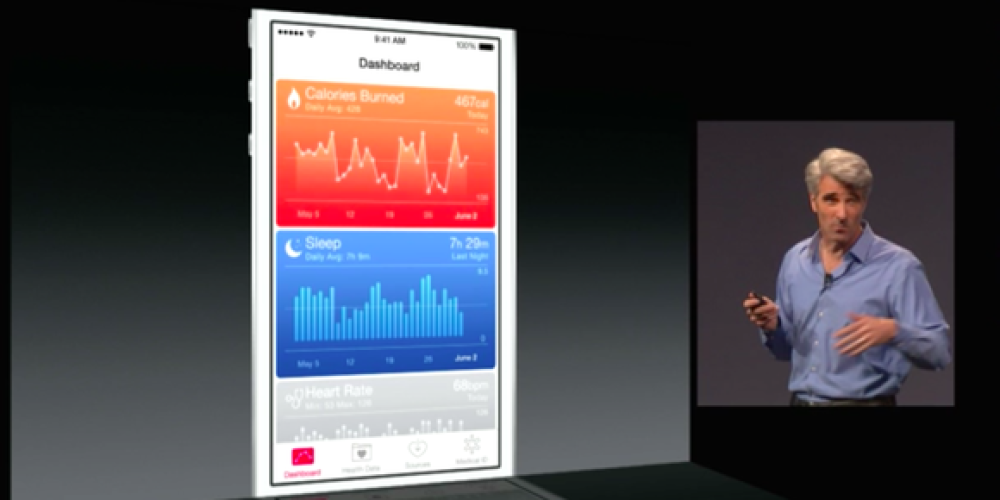Last week, we talked about taking a look inside your digital health business to establish your objectives, how to identify content and communications assets you can potentially leverage, and how to “listen” to your competition and prospects’ reactions to marketing messages taking place.
Now, it’s time to test your marketing message with your buyers. This is a key strategy step that many digital health firms dismiss. Without investing in this part of the process, you risk wasting time and money creating content and marketing messages that don’t educate, engage, and motivate your buyers.
Let’s spend some time together and show you how to…
Understand Digital Health Buyer Personas and the Buying Process
About This Show:
Each Wednesday, Sam Stern, founder and Chief Marketing Technologist at Modallic, an mHealth marketing and brand development firm reveals his winning Mobile, Digital and healthcare IT marketing strategies, shares real life Mobile Health marketing success stories, and offers breakthrough marketing tips and tactics so you can lead the field with your Mobile Health and healthcare IT solutions.
Discover how to craft compelling stories to open doors with key health care system decision makers. Understand how an agile marketing mindset and approach positions you to create a profitable, sustainable business.
Gain insights into Mobile Health and healthcare IT marketing strategy, how to tell your unique mHealth and healthcare IT marketing story, creating your mHealth buyer personas, how to integrate an agile marketing process, mobile health and digital health brand development and market positioning, and learn what really works in attracting and landing mobile health and healthcare IT clients.
Show Notes:
How to Test and Nail Down Buyer Personas
The First Step is to Identify Buyer Personas- The success of your digital media is matching your message with your target market. It’s a basic principle of marketing. The three legs of the marketing “stool” must be in place:
Right Market > Right Message > Right Media
If one of the legs of the stool is missing or broken, your marketing cannot stand.
Get started with Identifying what type of Buyers you want to target – Develop a clear understanding of the problems, challenges faced, desires, and motivations of your buyers. You need to put yourself in their world.
Mobile Health and healthcare IT buyers fall into three broad categories:
- Individual Mobile App End Users- Patients
- Front-Line Healthcare Clinicians- Doctors, nurses, and medical staff
- Hospital Executive and IT Administration- Chief Information Officer, Director of IT, the hospital CEO, Chief of Surgery, etc.
Next… Create Written Funder Persona Profiles
Your Buyer Persona Profiles should include information about your buyers in four areas.
These areas are:
Demographic – Age, Sex, Family Status, Occupation, Income Level, Where do they live? Etc.
Psychographic – Values, Beliefs, Anxieties, Desires, Fears, etc.
Sociographic – What influences them? Who do they listen to? Who do they trust?
How they use/interact with digital media – How do they access the Internet- desktop, tablet, smartphone? Where do they access the Internet? Are they active on social media- which platforms? What blogs do they read, or do the blog themselves?
On the mHealthMarker blog of Modallic, you’ll find a Buyer Persona Cheat Sheet and how to create agile buyer personas to address the multiple decision makers you’ll encounter when marketing and selling healthcare IT solutions. Check the Show Notes of this podcast for the links to these posts.
After you’ve identified and written your Buyer Personas, now it’s time to…
Develop and Test Buyer Story Lines.
Buyer Story Lines are expressions of success and value, told from the perspective of your customers based on the following four elements:
-
Their situation,
-
The dilemma they face,
-
The aspect of your brand that will help their lives,
-
The specific benefit emotionally and logically that will solve their dilemma.
Here’s the approach we take on Buyer Story Lines when working with a client. We collaborate with the digital health firm’s marketing team leaders to create 8-12 Buyer Story Lines. These Buyer Story Lines are expressed verbally and visually in a “board” format.
Next, these 8-12 Buyer Story Lines are tested, using a combination of a sophisticated on-line proprietary research tools, group settings, and 1 on 1 interviews.
The test participants are asked to rank the overall appeal of the Buyer Stories Lines in order based on three criteria:
1. Distinctiveness – Can the same be said about other digital health products or services?
2. Importance – Will the story have a significant role in solving my dilemma?
3. Belief – Can I trust and believe what I am being told?
The analysis of all interviews provides the information needed to define points of consensus, points of differentiation, and the level of customization in crafting your marketing story and serves as the standard for future communications.
The results of the Brand Story Test is reported in a “Brand Summit”, a key executive level program where results are presented and discussed.
As you can see, this process of developing and testing Buyer Story Lines is in-depth and intensive. It requires an investment of time and money, but the payoff is knowing you have a Buyer Story that has the greatest chance for success in the marketplace.
Finally, after you develop and test the Buyer Story Lines, you need to…
Define the Buying Process Stages – Determine the key stages and milestones required to move a stranger to a client to an advocate for your digital health products and services.
Typical Stages of the healthcare IT Buying Process might include:
Research:
Creating Awareness and Attracting Attention – First contact or exposure to your message
Initial Website or Blog Visit
Cultivation:
Subscribe to Email List/Download a White Paper – The prospect expressed interest in your product or service and has given permission for ongoing communication
Education/Nurturing – Email follow-up series, newsletters, announcement of blog posts, invitations to webinars, etc
Ask:
Calls to Action- Your content must include calls to action at every step within the Buying Process. The response to the Calls to Actions indicates the prospects level of interest. Based upon past performance of key milestones within the buying process, you may also want to establish Lead Scoring. Lead Scoring triggers the next step to take in the Buying Process.
Handoff to Sales Team- Once marketing leads reach a certain point, you determine the best time to hand qualified leads to your sales team. Keep in mind, today, buyers prefer to do 65-75% of the research and relationship building before ever talking to or meeting with sales.
It’s also important to understand where the various Buyer personas enter and engage in your Buying Process, the roles they play, what information they seek, and what influences them.
Next week, we’ll talk about the Buyer’s Journey and how to identify the content and communications gaps, based upon what you discovered during your content assessment and what you learned in developing and testing your Buyer personas.
Resources:
How to Create Agile Buyer Personas
Will You Help Me Get This Message Out There?
Want to get more tips and strategies for marketing your digital health firm? There are three ways you can enjoy these tips and strategies, share them with friends, and help me grow this movement to end the lack of innovation in healthcare:
Sign up for this podcast on iTunes. Click here to subscribe to the podcast on iTunes.
Subscribe to this podcast through the Podcast app on your iPhone or Android phone (free from the app store).
Leave a review — Share an honest sentence or two about the show on the iTunes page and give it a star rating (this makes a HUGE difference in helping others find the show).
Share the Podcast — Share this episode with friends and colleagues. An easy way to do that is by using the social media buttons down below.
Finally, if you have a question you’d like answered on a future show — or if you have any feedback in general — please let me know: sstern@modallic.com
Thanks again for your support!









7 thoughts on “#006- Digital Health Marketing- How to Test and Nail Down Buyer Personas”